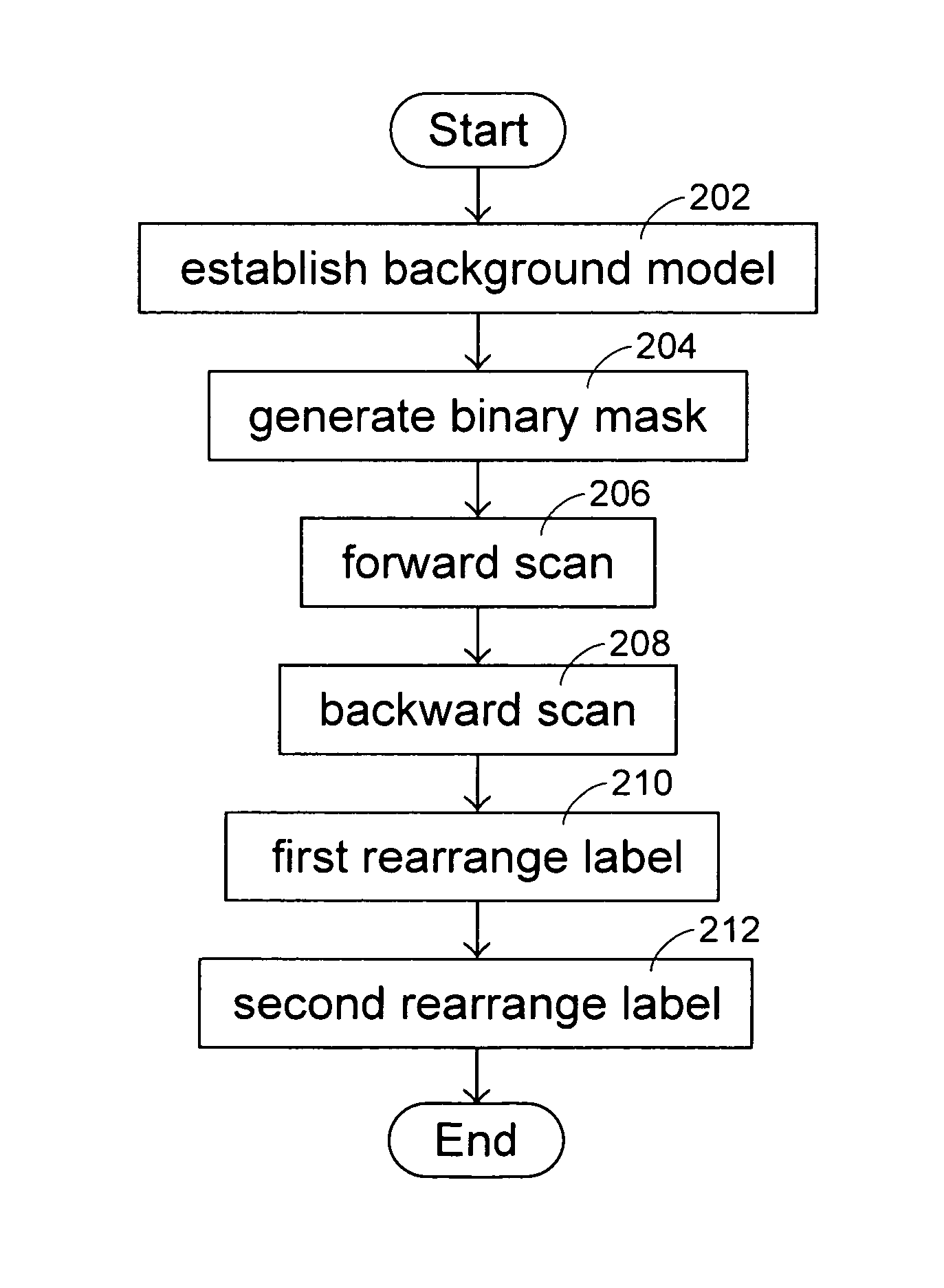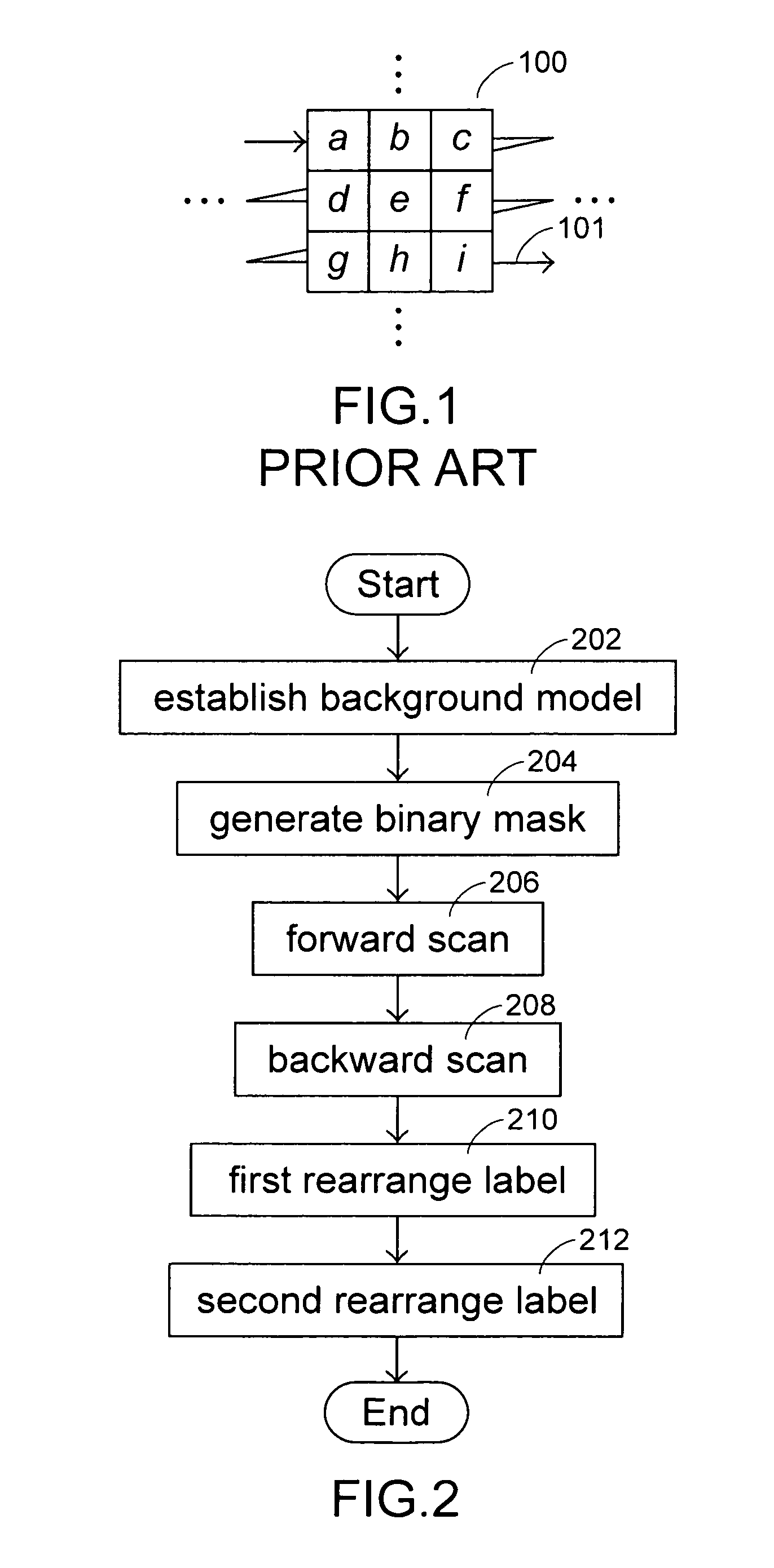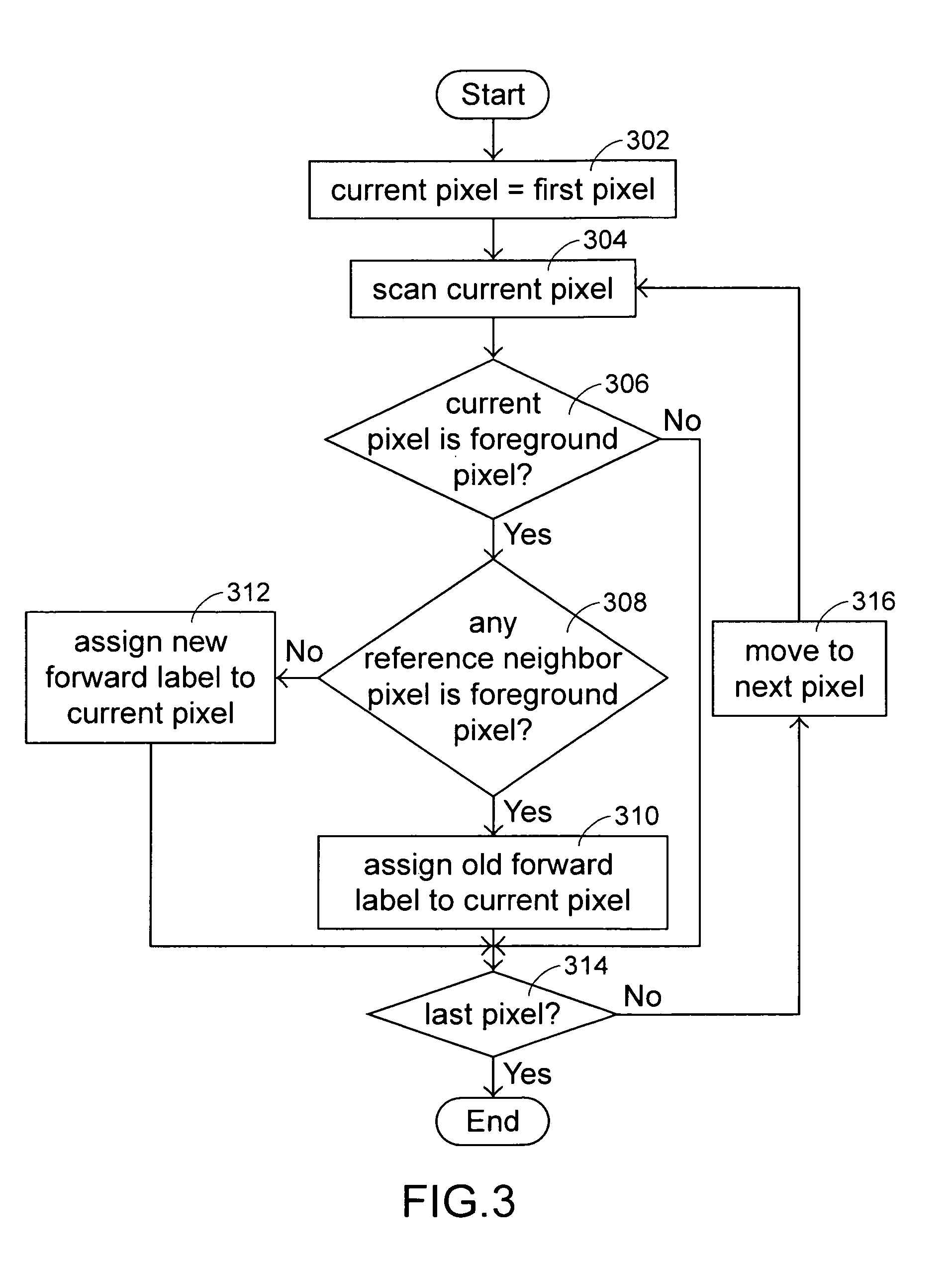Image analysis using a hybrid connected component labeling process
a component labeling and connected technology, applied in the field of connected component labeling process, can solve the problems of consuming a large amount of resources, terribly large number of passes of the pass algorithm, and inability to effectively reduce the number of assigned labels during the scan procedure, so as to increase the efficiency of hardware implementation and save hardware resources
- Summary
- Abstract
- Description
- Claims
- Application Information
AI Technical Summary
Benefits of technology
Problems solved by technology
Method used
Image
Examples
Embodiment Construction
[0023]The present invention will now be described more specifically with reference to the following embodiments. It is to be noted that the following descriptions of preferred embodiments of this invention are presented herein for purpose of illustration and description only. It is not intended to be exhaustive or to be limited to the precise form disclosed.
[0024]The process and system of the present invention has been described below in terms of functional modules in block diagram format. It is understood that unless otherwise stated to the contrary herein, one or more functions may be integrated in a single physical device or a software module in a software product, or one or more functions may be implemented in separate physical devices or software modules at a single location or distributed over a network, without departing from the scope and spirit of the present invention.
[0025]It is appreciated that detailed discussion of the actual implementation of each module is not necess...
PUM
 Login to View More
Login to View More Abstract
Description
Claims
Application Information
 Login to View More
Login to View More - R&D
- Intellectual Property
- Life Sciences
- Materials
- Tech Scout
- Unparalleled Data Quality
- Higher Quality Content
- 60% Fewer Hallucinations
Browse by: Latest US Patents, China's latest patents, Technical Efficacy Thesaurus, Application Domain, Technology Topic, Popular Technical Reports.
© 2025 PatSnap. All rights reserved.Legal|Privacy policy|Modern Slavery Act Transparency Statement|Sitemap|About US| Contact US: help@patsnap.com



